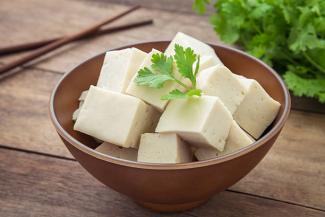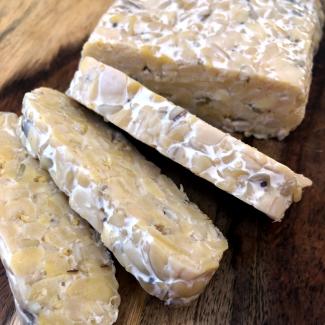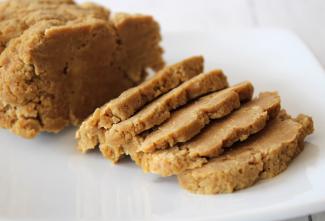Why vegan protein? The options and the benefits!




With so many diet options popping up in the news these days, people may experience concern about eating animal protein. Most of you probably know that protein plays a big role in building and maintaining muscle, but it is also an important component of almost every part of our bodies, including skin, hair, enzymes and blood. So, can we really change to a plant-based diet without negatively affecting our body? The answer is a resounding yes!
According to the Academy of Nutrition and Dietetics on Vegetarian Diets, “Vegetarian, including vegan diets typically meet or exceed recommended protein intakes, when caloric intakes are adequate.”
There are a number of different sources of vegan protein you can use in recipes, including: (from top, tofu, tempeh, seitan, beans.)
Tofu: made by curdling soy milk with a coagulant such as nigari, magnesium chloride, calcium sulfate, or magnesium sulfate and then pressing the solids into a block and cooling it. Tofu has little to no flavor. This is why it can be so functional and versatile for many recipes. However, you should pay attention to what type of tofu a recipe calls for since they are not always interchangeable. The amount of protein found in tofu differs slightly based on the type, but as a rule of thumb, a half-cup serving of firm tofu has around 80 calories and 11 grams of protein.
Tempeh: also created from soy. This product is made by taking whole soybeans, soaking them until softened, slightly cooking them, and then fermenting them to form a solid block. Unlike tofu, tempeh is minimally processed, so the soybeans are intact in the final product. Its flavor is mild and nutty, which makes it great for savory recipes. Quantifying the protein content, a 3-oz. serving of tempeh has 160 calories and 15 grams of protein.
Seitan: made from wheat gluten, which is the protein contained in wheat. The gluten is isolated from the wheat flour by washing it to remove starch, so that only the gluten is left behind. Its flavor has a nutty, yeast-like character that works well in savory recipes. There are 100 calories and 15 grams of protein in a 2-oz. portion of seitan.
You may also want to consider beans and other legumes as alternative sources of protein. These are great add-ons to your diet because in addition to protein, beans and legumes are also a great source of fiber, iron, vitamin B6, and magnesium. Their protein content varies depending on which one you choose. For example: a half-cup of chickpeas has around 5 grams of protein, while the same amount of kidney beans contains around 8 grams of protein. Soybeans like edamame deliver 9 grams of protein per half-cup serving. If you prefer lentils, their protein content is about the same – 9 grams per half-cup serving, cooked.
We shouldn’t forget the nuts and seeds that not only provide necessary protein, but are also a great source of other beneficial nutrients such as healthy fats, vitamin E and magnesium. In general, a 1-oz. portion of nuts has about 4-6 grams of protein, while a 2-tablespoon serving of peanut butter contains around 9 grams of protein.
When choosing plant-based eating, it is important to note that not all foods that are labeled as vegan or vegetarian are actually healthy. Limit your intake of processed meat substitutes such as soy burgers or sausages as these likely contain added sodium. Instead, choose from whole plant-based foods.
It’s important to keep in mind that life is all about balance; therefore, you do not have to completely avoid eating meat, dairy, and eggs, if it’s not your personal choice. Just remember to enjoy those foods in moderation and increase your intake of whole plants foods, as well.
